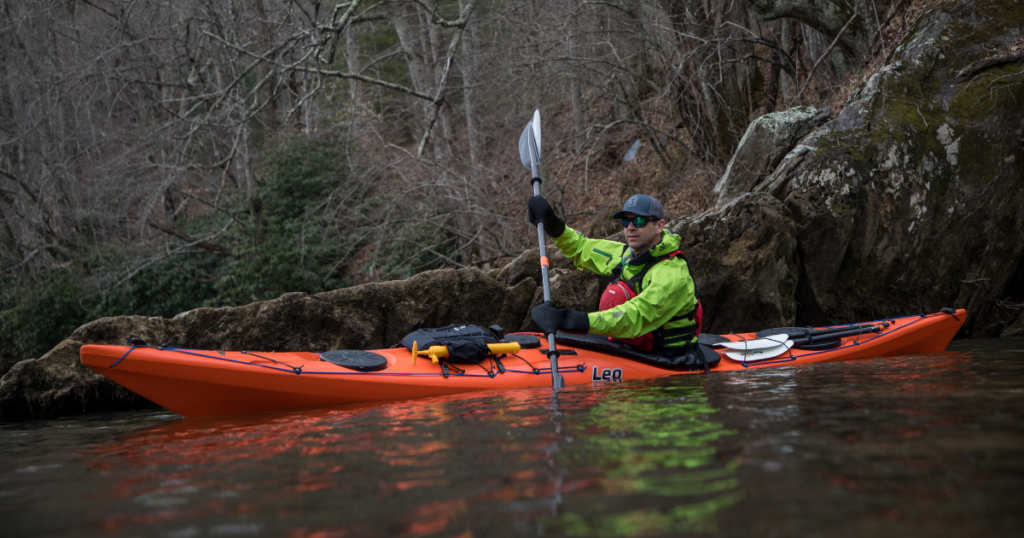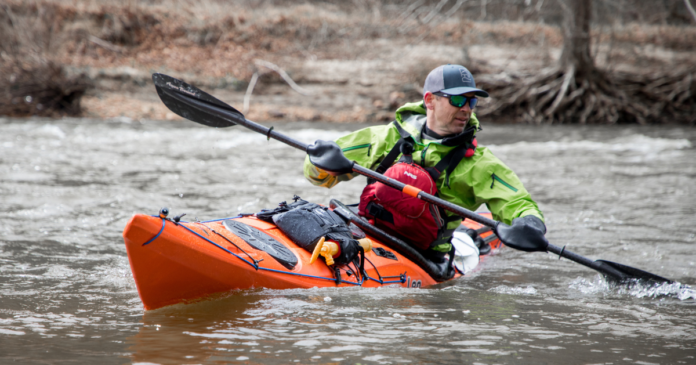One of the biggest concerns that newer paddlers have is in regards to flipping their kayak. This makes sense since sometimes it can be a cold and intimidating experience. Unfortunately, these “what if?” scenarios prevent many potential paddlers from ever taking up the sport. This breaks my heart a little bit because with a few basic strategies, you can dramatically reduce your chances of going for an unexpected swim. Implementing any-and-all of these should give you a huge confidence boost, which will hopefully increase your excitement to get out on the water.
Pro Tip #1: Get Yourself in a Stable Kayak
The easiest thing you can do to prevent flipping is to start with a kayak that is designed to keep you upright. Recreational kayaks are the most stable models on the market. They are typically made with a width of between 28 to 40 inches. This platform is inherently more sturdy, and thus harder to capsize. Sit-on-top kayaks are also more stable than sit-inside models.
So why doesn't everyone just go with a fool-proof rec-kayak? Well, those design features come at the cost of performance. The extra girth of those boats has to displace that much more water as you paddle. This reduces the kayak's speed and efficiency. A lot of newer or more casual paddlers aren't concerned about this. They just want something to enjoy out on the open water. But if you're someone who prefers to focus on performance, or if you think you'll want a kayak that you can grow into as you progress, then you'll have to opt for a sleeker design that will be more prone to flipping. Thankfully, there are some techniques you can deploy to keep your kayak both speedy and upright.
Pro Tip #2: Don't Lose Your Balance

Always keep your head centered over the kayak
This applies at all times, whether you're sitting flat or have the kayak on edge. If you let your head dip to the side, the kayak's center of gravity will naturally follow. The water will await you as you flip. This is also a great way to lose your sunglasses, even if you don't fully submerge.
Stay loose in your hips
The key here is to let your upper and lower body work independently. This creates an overall synergy in terms of balance. Newer paddlers tend to be stiff. If a bit of chop comes your way, your whole body will be affected and lead to a loss of balance. If you can relax your lower body and let it roll with the punches (i.e. rocks, waves, wind, etc.) then your upper body and head can stay level throughout. The nice thing about this technique is it's also a criteria for more advanced paddling.
Loose hips will help you put the kayak on edge in order to handle rougher conditions, which you may intentionally want to launch into one day. So practice keeping those hips loose and you'll be well on your way to progressing as a paddler.
Recover your balance (i.e. Bracing)
If you take a narrow, high-performance kayak into more aggressive conditions, then you are inevitably going to lose your balance from time to time. When that happens you'll want to deploy a bracing maneuver. To do this, use your paddle to slap the water (and dig in a bit) on the same side that you're tipping. This momentary support will allow you to roll the kayak back into an upright position and then bring your torso overtop.
This technique is greatly served by a kayak that has good hip-support, as well as thigh-hooks. A well-designed touring kayak is analogous to having a nicely-fitted, grippy pair of trail shoes. The general outfitting on a rec-kayak is more like popping on a pair of rubber boots. Which would you rather have in unstable conditions?
High and Low Brace Positions
The two main brace techniques you can deploy have to do with the position of your paddle relative to your elbow. As you might suspect, for a low brace the paddle is lower than your elbows, and vice versa for a high brace. Whichever you lean on, make sure that you reach out at a 90-degree angle to slap the water. The natural tendency is to try and push your upper body back into an upright position. However, slapping the water with your paddle is simply not going to provide that kind of leverage.
Instead, you have to level-off the boat first. The only way to do that is to pull up with the knee that's going under water. Once your kayak is level, you can then rock your torso and head back into a centered position. This is where thigh-hooks and hip-pads really come in handy. While doing this second part, it helps to sink low in the boat, which will also drop the overall center of gravity to a more stable position. A good trick to keep your head from dropping too far to the side is to watch your brace as you're doing it. It's harder to lift your head if you're looking straight down at the water.
There is more to unpack with these bracing techniques but that's a little beyond the scope of this article. Regardless of the type of kayak you're in, if you feel yourself flipping use your paddle to slap the water. Stop that momentum, and roll yourself back to home base.
Pro Tip #3: Learn the Kayak Roll
It can be difficult to develop a reliable brace technique until you've actually used it in some unexpected situations. If you're in the types of conditions that will present you with random flips, then the best thing you can do is learn the kayak roll. Back when I was an adventurous lad, starting out with some whitewater kayaking, I actually learned how to roll first. I thought it was cool and I had a lot of fun doing it. So everytime I felt myself tipping over, I would just, well…roll with it! Eventually, after about 50 dunks, this started to lose its appeal. I realized that I'd rather not go under again, and instinctively slapped the water with my paddle. Viola! I now had another trick up my sleeve.
Your first line of defense is definitely the brace. If you can develop your roll as a backup, then you'll have that much more confidence out on the water. The goal here is to avoid flipping, but if you can embrace it during the learning period, you'll be able to avoid it a lot more in the future, and easily manage it whenever it does still happen.
I hope you all learned a thing or two from this rundown. I hope that anyone who was hesitant about jumping in a kayak in the first place, now has the confidence to do so. Kayaking is so much fun and you don't need to spend a lot of time underwater. If you get yourself in a stable vessel, play around with some of these techniques and you'll be sturdy as a mountain goat. Well, mountain goats probably aren't very stable on water. You'll be sturdy as one of those weird water spiders that can walk along the surface.
Thanks for dropping by. For more tips, unbiased gear-reviews, and Paddle Tales adventures, check out PaddleTV.





